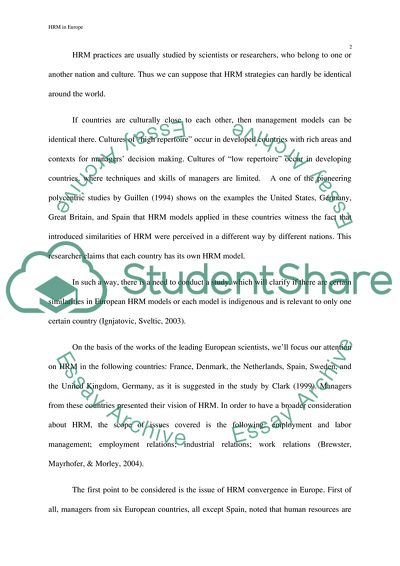Cite this document
(HRM in Europe Coursework Example | Topics and Well Written Essays - 2750 words, n.d.)
HRM in Europe Coursework Example | Topics and Well Written Essays - 2750 words. https://studentshare.org/human-resources/1744047-what-do-you-think-have-been-the-emergng-similarities-of-hrm-in-europe-would-this-lead-toa-convergence-of-hrm-practicies
HRM in Europe Coursework Example | Topics and Well Written Essays - 2750 words. https://studentshare.org/human-resources/1744047-what-do-you-think-have-been-the-emergng-similarities-of-hrm-in-europe-would-this-lead-toa-convergence-of-hrm-practicies
(HRM in Europe Coursework Example | Topics and Well Written Essays - 2750 Words)
HRM in Europe Coursework Example | Topics and Well Written Essays - 2750 Words. https://studentshare.org/human-resources/1744047-what-do-you-think-have-been-the-emergng-similarities-of-hrm-in-europe-would-this-lead-toa-convergence-of-hrm-practicies.
HRM in Europe Coursework Example | Topics and Well Written Essays - 2750 Words. https://studentshare.org/human-resources/1744047-what-do-you-think-have-been-the-emergng-similarities-of-hrm-in-europe-would-this-lead-toa-convergence-of-hrm-practicies.
“HRM in Europe Coursework Example | Topics and Well Written Essays - 2750 Words”. https://studentshare.org/human-resources/1744047-what-do-you-think-have-been-the-emergng-similarities-of-hrm-in-europe-would-this-lead-toa-convergence-of-hrm-practicies.


